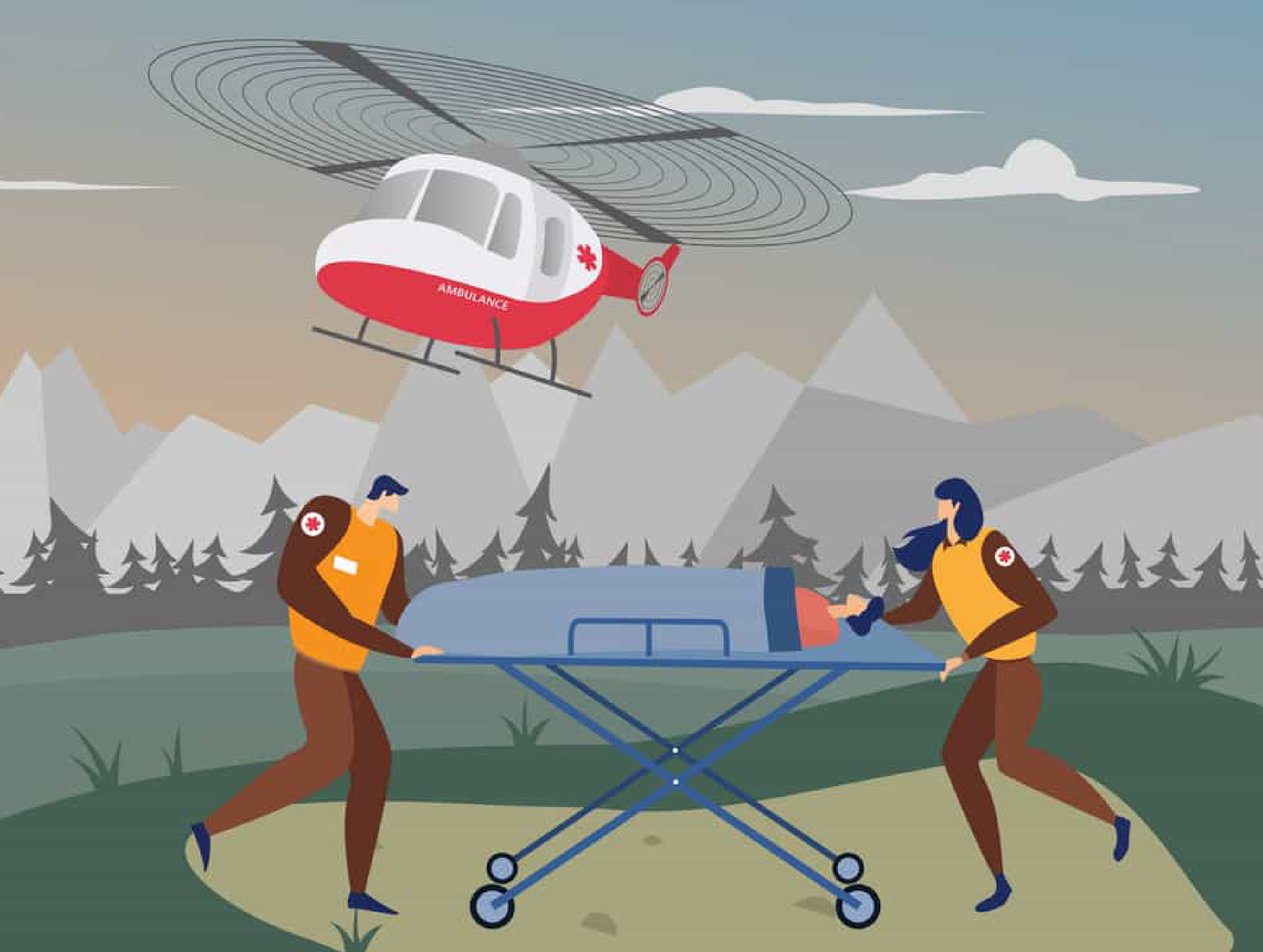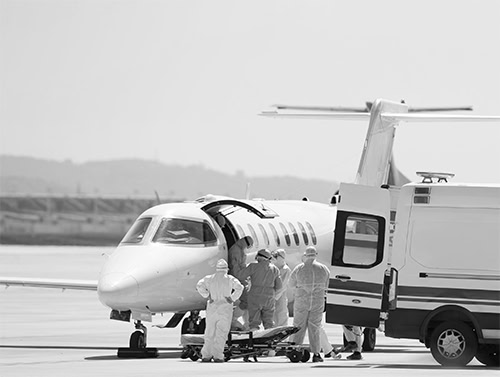Challenges of providing air ambulance services in remote and rural areas
In August 2020, an elderly woman with a broken leg was rescued by Indo-Tibetan Border Police and taken to a hospital 40 km away. It took 25 soldiers a total of 15 hours to carry her through waterfalls, landslide zone areas, and deep forests of Uttarakhand.
The challenges of accessing emergency medical care in remote areas can be a matter of life and death. Often located far away from major cities that have advanced medical facilities along with difficult terrain, poor road infrastructure, poor communication, and weather make it almost impossible for ground ambulances to transport patients in a timely manner.
One of the most significant advantages of air ambulance services is their ability to reach these areas quickly. They are designed to provide critical medical attention and transportation to the nearest medical facility. However, providing air ambulance services in remote and rural areas presents unique challenges that require careful planning and execution.
Infrastructural needs
One of the primary challenges of providing air ambulance services in remote and rural areas is the lack of infrastructure. Unlike urban areas, these regions have limited access to airports and helipads. This means that air ambulance services must be able to land in fields or open spaces, which can be difficult to identify and navigate. Additionally, rural areas often have challenging terrain and adverse weather conditions, such as mountains, valleys, or extreme temperatures, which can make it difficult for helicopters to fly.
North Vancouver in Canada known for its hiking trails is set in extreme wilderness, away from any helipads or medical facilities. In case of any emergencies faced by hikers at night, North Shore Rescue (a non-profit organization dedicated to wilderness search and rescue) has to send in a ground team that searches for stranded victims or lost hikers and carries them to a place safe for a helicopter to land in the morning. With low visibility and hostile treed ravines, search and rescue missions by helicopters were impossible. Only recently, did the organization get approvals for night-vision goggle-assisted night flights using which helicopters can drop a line and airlift the victims out.
Distance & time
The golden hour refers to the window of time in which a patient needs to receive treatment following trauma to have the best chance at survival. In order to achieve the patient receiving treatment within the golden hour, air medical transportation services often come into play. For example, when someone experiences trauma in a rural area several miles from the nearest hospital and the drive time for transport via ground ambulance is too long, first responders typically rely on air ambulance services to get the patient to a medical facility as quickly as possible.
This means that air ambulance services must be able to cover long distances quickly, which can be challenging in areas with limited fueling and maintenance facilities. Moreover, air ambulance services must consider the availability of medical personnel and resources at the receiving hospital, which may not have the same level of specialization or equipment as larger urban facilities.
Availability of trained personnel
Providing air ambulance services in remote and rural areas requires a skilled and experienced operation crew. They must be trained to deal with the unique challenges presented by these regions, such as difficult terrain and adverse weather conditions. While air ambulances were initially designed just for speed, today they also serve as mobile ICUs. Emergency medical care in flight can be more challenging than on the ground which requires specialized training. For instance, while transporting victims of strokes and heart attacks, a highly trained medical crew can administer drugs to dissolve blood clots in a stroke patient’s brain before getting to the hospital, reducing the odds of permanent damage.
Cost
Another challenge of providing air ambulance services in remote and rural areas is the cost. Air ambulance services are expensive, and the cost is often higher in remote and rural areas due to the distance and complexity of the operation. Moreover, many patients in these areas may not have insurance or the means to pay for air ambulance services, which can make it difficult to provide these services without incurring significant financial losses.
Addressing these challenges requires a collaborative effort between air ambulance providers, medical facilities, and local communities. By working together, we can ensure that patients in remote and rural areas receive the care they need when they need it most.



